Mid-Atlantic State of the Ecosystem Report
Chesapeake Bay Program Goal Implementation Team Meeting
14 January 2021
Sarah Gaichas
Northeast Fisheries Science Center
Many thanks to:
Kimberly Bastille, Geret DePiper, Kimberly Hyde, Scott Large, Sean Lucey, Bruce Vogt,
and all SOE contributors
State of the Ecosystem (SOE) reporting
Improving ecosystem information and synthesis for fishery managers
Ecosystem indicators linked to management objectives (DePiper, et al., 2017)
- Contextual information
- Report evolving since 2016
- Fishery-relevant subset of full Ecosystem Status Reprorts
Open science emphasis (Bastille, et al., 2020)
Used within Mid-Atlantic Fishery Management Council's Ecosystem Process (Muffley, et al., 2020)
The IEA Loop1
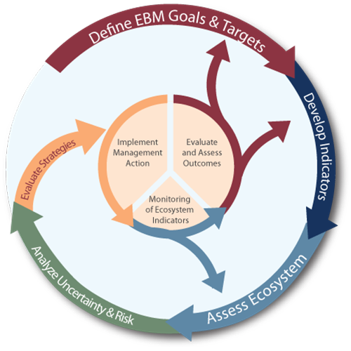
Meeting Purpose: ● Deliver emerging science and improve cross-jurisdictional collaboration to improve fishery management decisions ● Lead forums that bring the management and science communities together to learn about the latest fisheries and habitat science, discuss management implications, identify new science priorities, and identify funding opportunities Presentation Content: ● Keep in mind - we want to ensure presentations are palatable and engaging for a broad membership audience. ● Points of focus: ○ Importance of research ○ Key findings or updates ○ Connections to management implications ○ New arising questions and next steps ● Points to generally avoid: ○ Technical slides focusing on project methodology ■ Feel free to still include method slides (at the end of your presentation) to have as an available resource during group discussion
Mid-Atlantic Fishery Management Council Ecosystem Approach (Muffley, et al., 2020)
2016 EAFM Policy Guidance document; revised 20191
2016 MAFMC EAFM framework (Gaichas, et al., 2016)
2017 Inital EAFM risk assessment completed; revised and published 2018 (Gaichas, et al., 2018)
2018 Council selected summer flounder as high risk fishery
2019 EAFM conceptual model linking summer flounder drivers and risks (DePiper et al., in review)
2020 Council starting EAFM MSE for summer flounder recreational discards
SOE indicators to be used for annual risk assessment updates
But can managers get more from the SOE and risk assessment?
The Council’s EAFM framework has similarities to the IEA loop on slide 2. It uses risk assessment as a first step to prioritize combinations of managed species, fleets, and ecosystem interactions for consideration. Second, a conceptual model is developed identifying key environmental, ecological, social, economic, and management linkages for a high-priority fishery. Third, quantitative modeling addressing Council-specified questions and based on interactions identified in the conceptual model is applied to evaluate alternative management strategies that best balance management objectives. As strategies are implemented, outcomes are monitored and the process is adjusted, and/or another priority identified in risk assessment can be addressed.
State of the Ecosystem (SOE) Reporting: Context for busy people
"So what?" --John Boreman, September 2016
Clear linkage of ecosystem indicators with management objectives
Synthesis across indicators for big picture
Objectives related to human-well being placed first in report
Short (< 30 pages), non-technical (but rigorous) text
Emphasis on reproducibility
In 2016, we began taking steps to address these common critiques of the ESR model
State of the Ecosystem: Structure
2020 Report
- Summary 2 pager
- Human dimensions
- Protected species
- Fish and invertebrates (managed and otherwise)
- Habitat quality and ecosystem productivity
2021 Draft
- Summary 2 pager
- Page 1 summary bullets
- Page 2 synthesis themes
- Performance against management objectives
- Risks
Established ecosystem-scale objectives
| Objective Categories | Indicators reported here |
|---|---|
| Provisioning/Cultural | |
| Seafood Production | Landings by feeding guild |
| Profits | Revenue decomposed to price and volume |
| Recreation | Days fished; recreational catch |
| Social & Cultural | Commercial engagement trends |
| Supporting/Regulating | |
| Stability | Diversity indices (fishery and species) |
| Biomass | Biomass or abundance by feeding guild from surveys |
| Productivity | Condition and recruitment of managed species, Primary productivity |
| Trophic structure | Relative biomass of feeding guilds, Zooplankton |
| Habitat | Estuarine and offshore habitat conditions |
2020 Report: Summary 2 pager with visualizations, 28 pages of narrative/plots, 1 page orientation
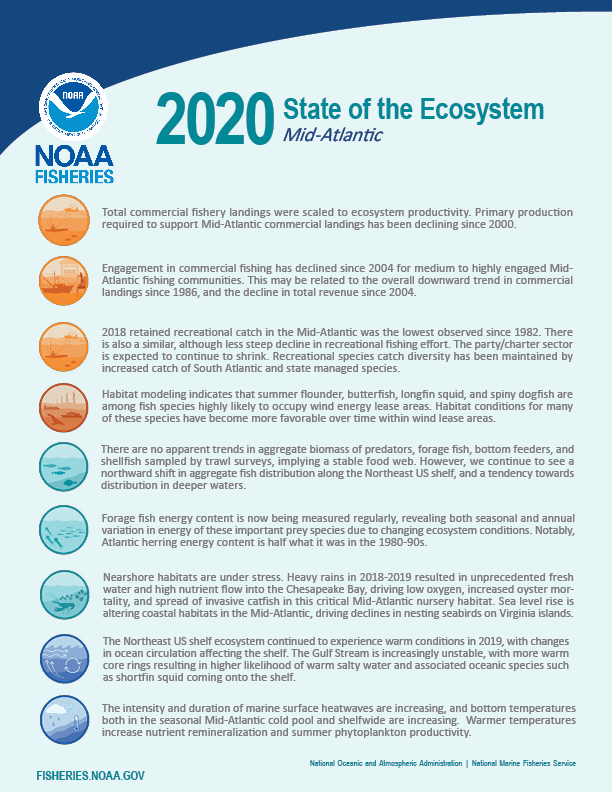
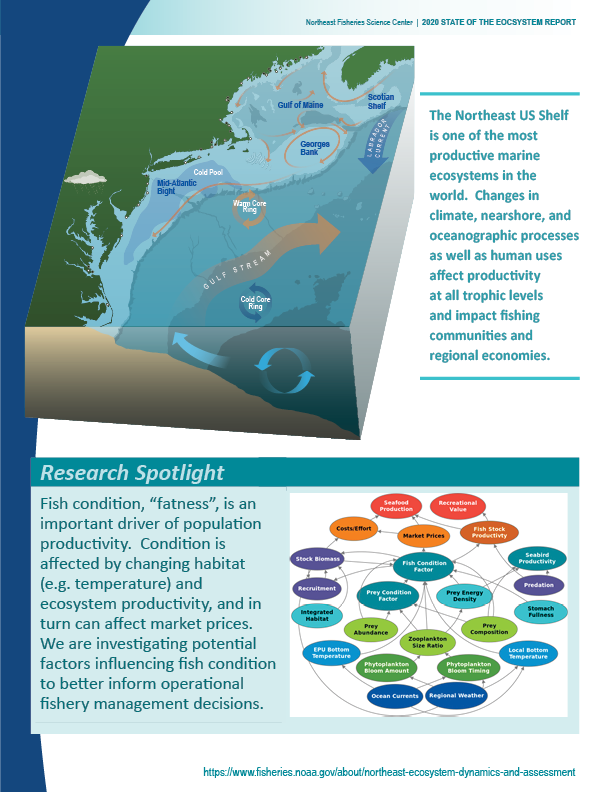
2020 Mid-Atlantic SOE Take Home Messages
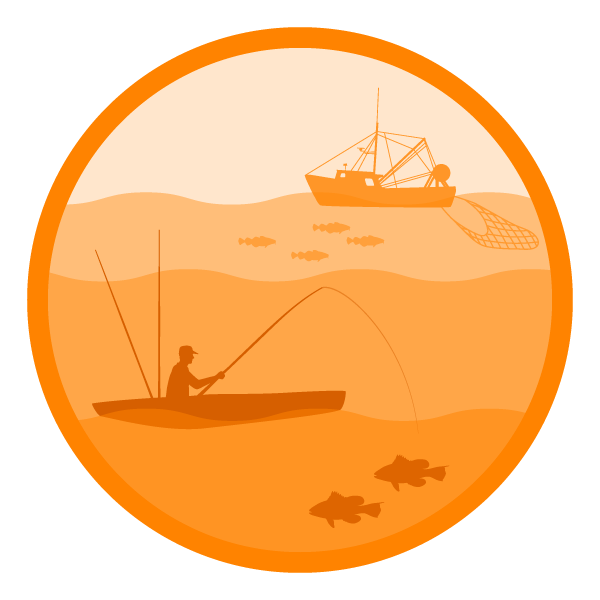
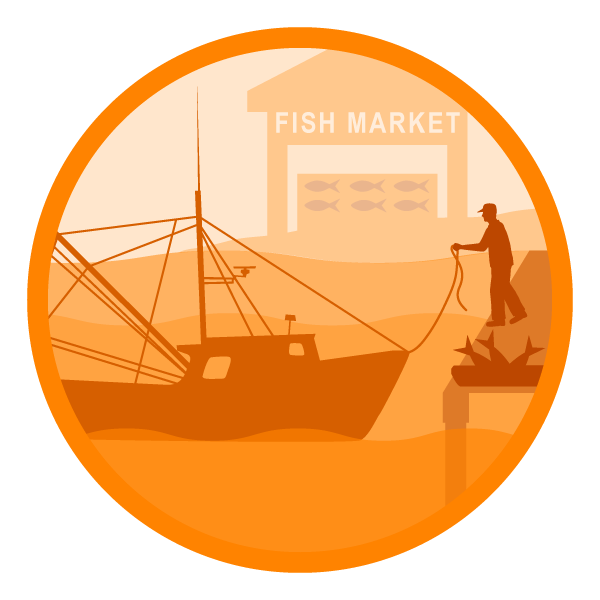
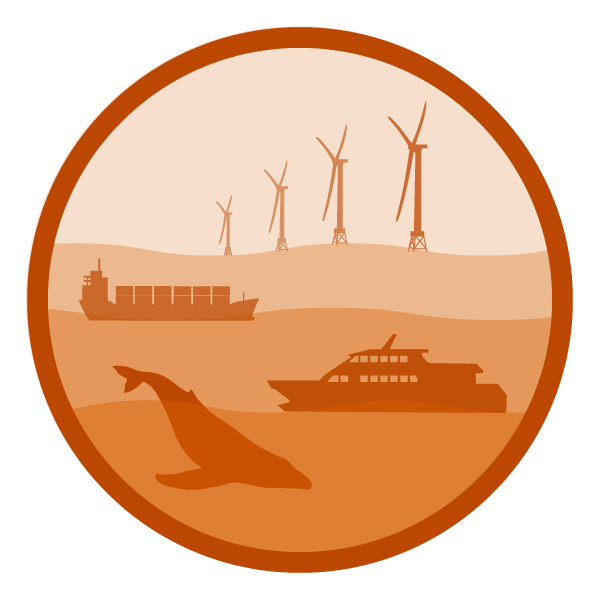
The fraction of ecosystem energy removed by fisheries is declining (commercial landings declined while primary production remained steady)
Commercial fishing engagement has declined for medium-highly engaged communities, possibly linked to continued declines in revenue
Recreational retained catch was lowest observed in 2018, and effort has been declining along with fleet effort diversity
Recreational catch diversity has been maintained by SAFMC/ASMFC species
2020 Mid-Atlantic SOE Take Home Messages
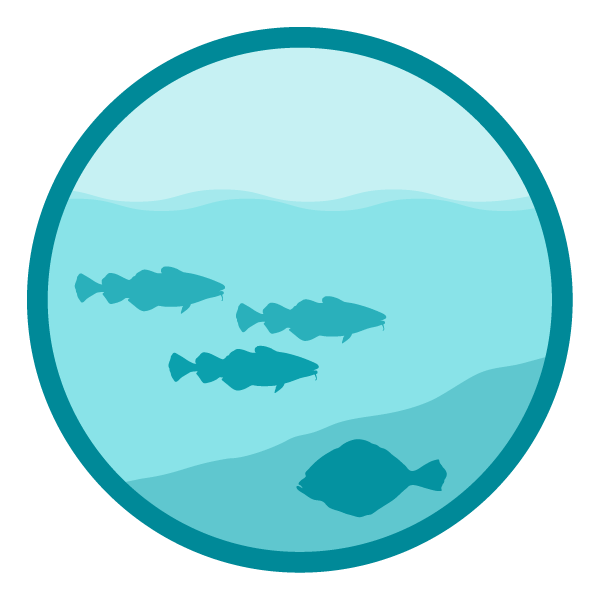
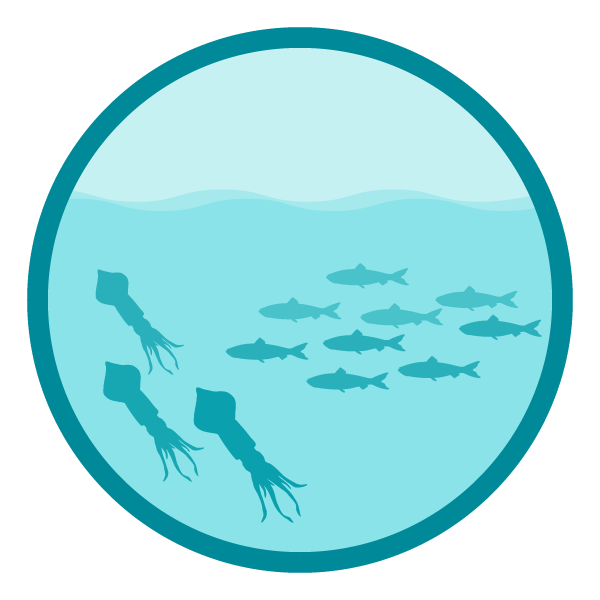
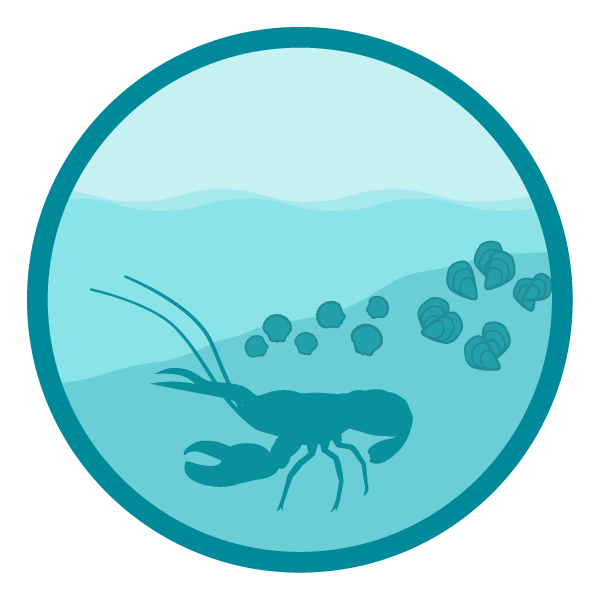
Habitat models identified species most likely to occur in wind lease areas; habitat has improved in wind lease areas for these MAFMC species
While aggregate fish biomass is stable over time, shifts to the northeast and into deeper water continue
Forage fish energy content varies by season and year; herring energy content may be half what it was in the 1980s-90s
2020 Mid-Atlantic SOE Take Home Messages
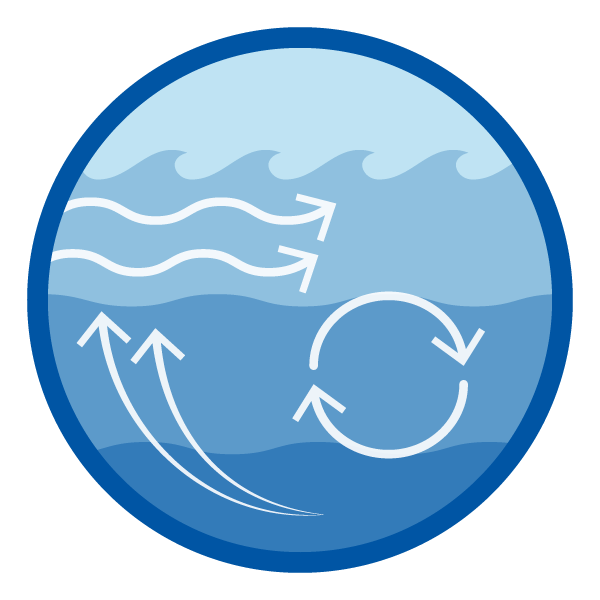
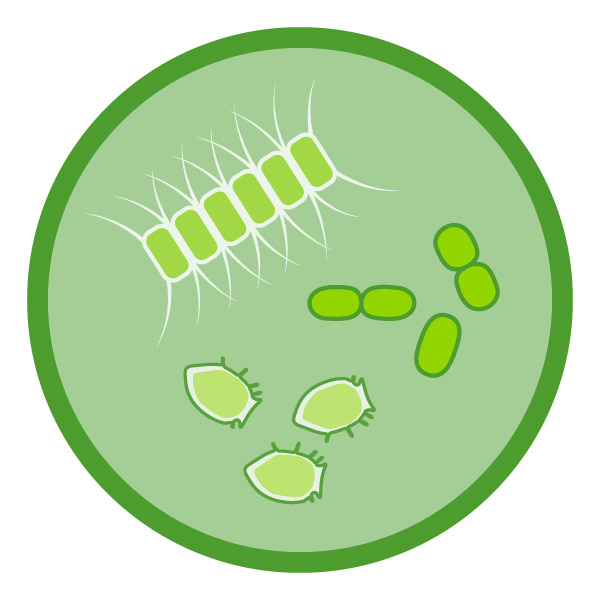
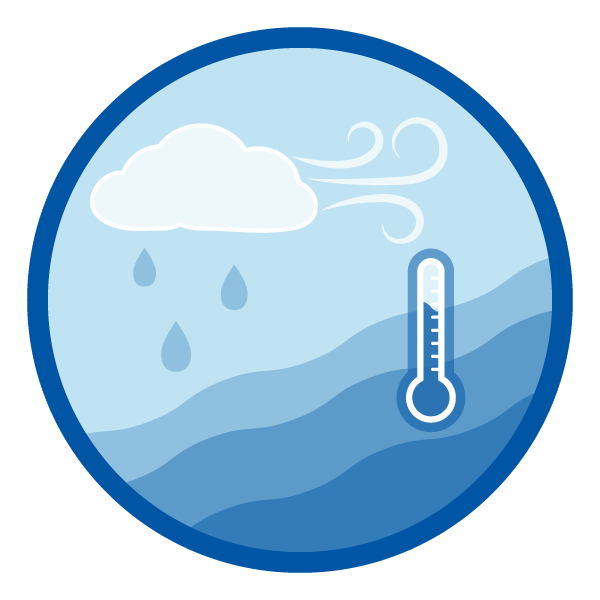
Heavy rains put unprecedented fresh water and nutrients into Chesapeake Bay in 2018-2019, increasing oyster mortality and spreading invasive catfish
Gulf stream instability produces more warm core rings with higher likelihood of warm salty water and associated species on the shelf
Marine surface water heatwaves are increasing in duration and intensity, bottom temperatures and the cold pool are warming
Warmer waters increase nutrient recycling and summer primary production
Proposed ecosystem synthesis themes for 2021
Characterizing ecosystem change for fishery management: plain language summary for 2 pager
- Multiple drivers of abundance, defined by the competing factors that influence the amount of fish in the ocean;
- Regime shifts, or ecosystem change can happen rapidly as multiple drivers change; and,
- Reorganization of the ecosystem, multiple factors that interact that change the structure and organization of the ecosystem, e.g. Tropicalization
Synthetic analysis in progress: environment - fish condition - market price linkages
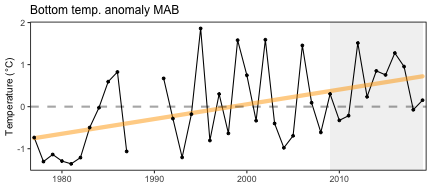
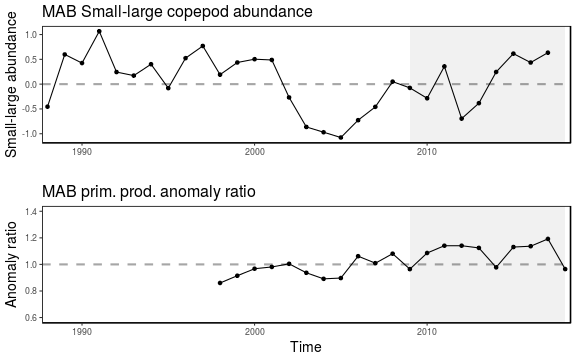
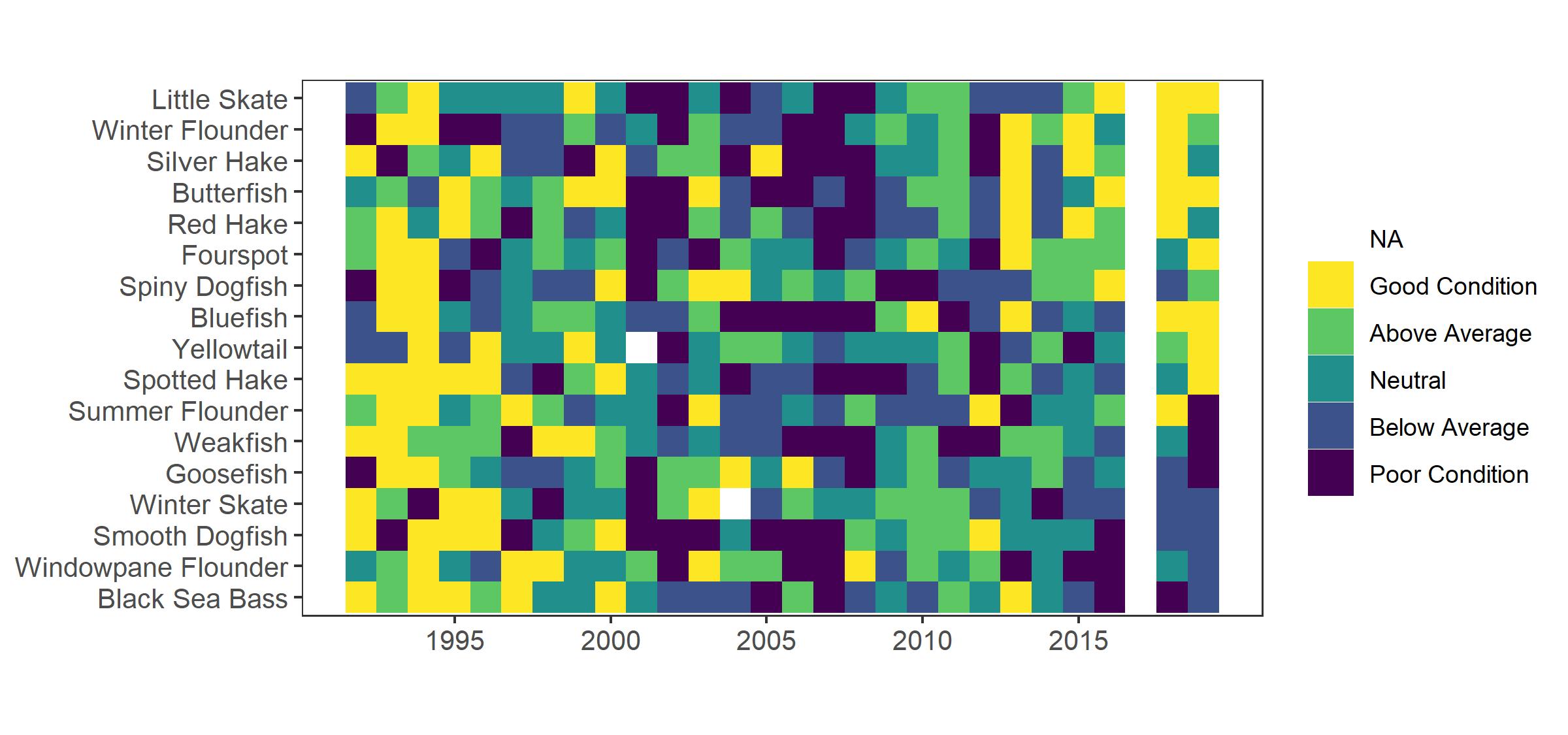
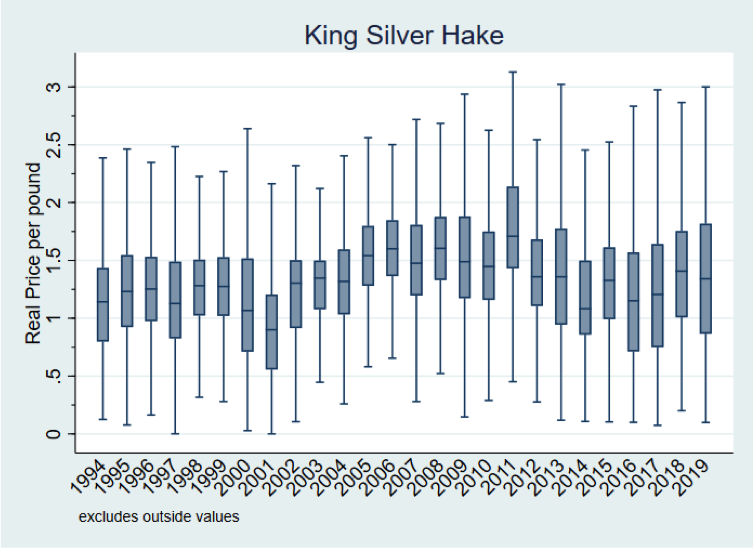
- Identify multiple and changing drivers of condition and market prices over time
- Recognize regime shifts and potential system reorganization
Sustained Interest in Estuarine Water Quality and Resource Impacts
Chesapeake Bay water quality update--2020 report
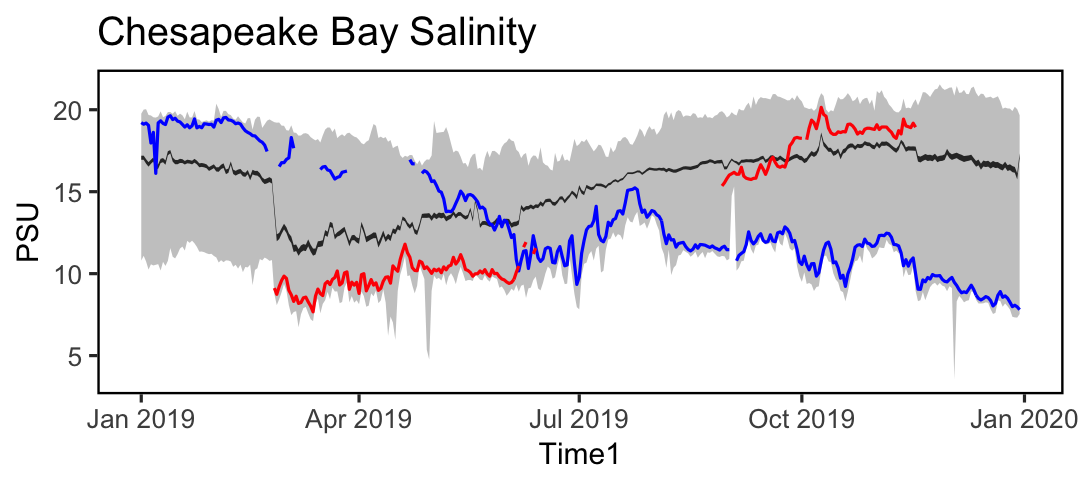
Salinity in Chesapeake Bay throughout 2018 (blue) and 2019 (red) as well as the daily average 2008-2019 (black) and the full observed range 2008-2019 (gray shading).
High precipitation led to extreme low salinity event in spring 2019
Linking to living resources: Indicator catalogue
- Low dissolved oxygen
Low spat set and high oyster mortality in upper Bay and Potomac
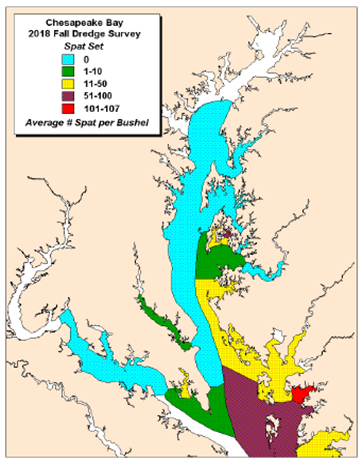
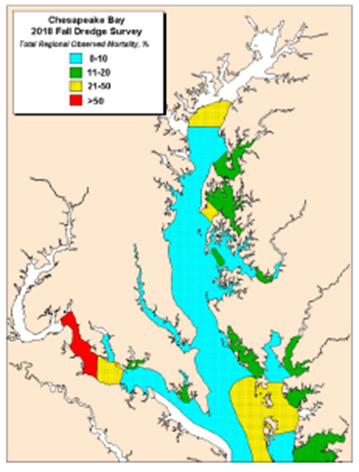
Invasive freshwater species (blue catfish) spread
Current management use: EAFM risk assessment
Species level risk elements
| Species | Assess | Fstatus | Bstatus | FW1Pred | FW1Prey | FW2Prey | Climate | DistShift | EstHabitat |
|---|---|---|---|---|---|---|---|---|---|
| Ocean Quahog | lowest | lowest | lowest | lowest | lowest | lowest | highest | modhigh | lowest |
| Surfclam | lowest | lowest | lowest | lowest | lowest | lowest | modhigh | modhigh | lowest |
| Summer flounder | lowest | lowest | lowmod | lowest | lowest | lowest | lowmod | modhigh | highest |
| Scup | lowest | lowest | lowest | lowest | lowest | lowest | lowmod | modhigh | highest |
| Black sea bass | lowest | lowest | lowest | lowest | lowest | lowest | modhigh | modhigh | highest |
| Atl. mackerel | lowest | highest | highest | lowest | lowest | lowest | lowmod | modhigh | lowest |
| Butterfish | lowest | lowest | lowest | lowest | lowest | lowest | lowest | highest | lowest |
| Longfin squid | lowmod | lowmod | lowmod | lowest | lowest | lowmod | lowest | modhigh | lowest |
| Shortfin squid | lowmod | lowmod | lowmod | lowest | lowest | lowmod | lowest | highest | lowest |
| Golden tilefish | lowest | lowest | lowmod | lowest | lowest | lowest | modhigh | lowest | lowest |
| Blueline tilefish | highest | highest | modhigh | lowest | lowest | lowest | modhigh | lowest | lowest |
| Bluefish | lowest | lowest | highest | lowest | lowest | lowest | lowest | modhigh | highest |
| Spiny dogfish | lowmod | lowest | lowmod | lowest | lowest | lowest | lowest | highest | lowest |
| Monkfish | highest | lowmod | lowmod | lowest | lowest | lowest | lowest | modhigh | lowest |
| Unmanaged forage | na | na | na | lowest | lowmod | lowmod | na | na | na |
| Deepsea corals | na | na | na | lowest | lowest | lowest | na | na | na |
Ecosystem level risk elements
| System | EcoProd | CommRev | RecVal | FishRes1 | FishRes4 | FleetDiv | Social | ComFood | RecFood |
|---|---|---|---|---|---|---|---|---|---|
| Mid-Atlantic | lowmod | modhigh | highest | lowest | modhigh | lowest | lowmod | highest | modhigh |
Species and Sector level risk elements
| Species | MgtControl | TecInteract | OceanUse | RegComplex | Discards | Allocation |
|---|---|---|---|---|---|---|
| Ocean Quahog-C | lowest | lowest | lowmod | lowest | modhigh | lowest |
| Surfclam-C | lowest | lowest | lowmod | lowest | modhigh | lowest |
| Summer flounder-R | modhigh | lowest | lowmod | modhigh | highest | highest |
| Summer flounder-C | lowmod | modhigh | lowmod | modhigh | modhigh | highest |
| Scup-R | lowmod | lowest | lowmod | modhigh | modhigh | highest |
| Scup-C | lowest | lowmod | modhigh | modhigh | modhigh | highest |
| Black sea bass-R | highest | lowest | modhigh | highest | highest | highest |
| Black sea bass-C | highest | lowmod | highest | modhigh | highest | highest |
| Atl. mackerel-R | lowmod | lowest | lowest | lowest | lowest | lowmod |
| Atl. mackerel-C | lowest | lowmod | modhigh | highest | lowmod | highest |
| Butterfish-C | lowest | lowmod | modhigh | highest | modhigh | lowest |
| Longfin squid-C | lowest | modhigh | highest | highest | highest | lowmod |
| Shortfin squid-C | lowmod | lowmod | lowmod | lowmod | lowest | highest |
| Golden tilefish-R | na | lowest | lowest | lowest | lowest | lowest |
| Golden tilefish-C | lowest | lowest | lowest | lowest | lowest | lowest |
| Blueline tilefish-R | lowest | lowest | lowest | modhigh | lowest | highest |
| Blueline tilefish-C | lowest | lowest | lowest | modhigh | lowest | highest |
| Bluefish-R | lowmod | lowest | lowest | lowmod | modhigh | highest |
| Bluefish-C | lowest | lowest | lowmod | lowmod | lowmod | highest |
| Spiny dogfish-R | lowest | lowest | lowest | lowest | lowest | lowest |
| Spiny dogfish-C | lowest | modhigh | modhigh | modhigh | lowmod | modhigh |
| Chub mackerel-C | lowest | lowmod | lowmod | lowmod | lowest | lowest |
| Unmanaged forage | lowest | lowest | modhigh | lowest | lowest | lowest |
| Deepsea corals | na | na | modhigh | na | na | na |
Future: Better integration of estuarine-nearshore habitats with offshore for managers
- Mid-Atlantic Council very interested in estuarine conditions and habitat supporting managed stocks
- Chesapeake Bay has excellent indicators and synthesis
- Prioritize next steps for identifying high risk combinations: Key species, habitats, and drivers
- 2021 SOE introduces Habitat Climate Vulerability Assessment results linked to species
## [1] TRUEReferences
Bastille, K. et al. (2020). "Improving the IEA Approach Using Principles of Open Data Science". In: Coastal Management 0.0. Publisher: Taylor & Francis _ eprint: https://doi.org/10.1080/08920753.2021.1846155, pp. 1-18. ISSN: 0892-0753. DOI: 10.1080/08920753.2021.1846155. URL: https://doi.org/10.1080/08920753.2021.1846155 (visited on Dec. 09, 2020).
DePiper, G. S. et al. (2017). "Operationalizing integrated ecosystem assessments within a multidisciplinary team: lessons learned from a worked example". En. In: ICES Journal of Marine Science 74.8, pp. 2076-2086. ISSN: 1054-3139. DOI: 10.1093/icesjms/fsx038. URL: https://academic.oup.com/icesjms/article/74/8/2076/3094701 (visited on Mar. 09, 2018).
Gaichas, S. K. et al. (2018). "Implementing Ecosystem Approaches to Fishery Management: Risk Assessment in the US Mid-Atlantic". In: Frontiers in Marine Science 5. ISSN: 2296-7745. DOI: 10.3389/fmars.2018.00442. URL: https://www.frontiersin.org/articles/10.3389/fmars.2018.00442/abstract (visited on Nov. 20, 2018).
Gaichas, S. K. et al. (2016). "A Framework for Incorporating Species, Fleet, Habitat, and Climate Interactions into Fishery Management". In: Frontiers in Marine Science 3. ISSN: 2296-7745. DOI: 10.3389/fmars.2016.00105. URL: https://www.frontiersin.org/articles/10.3389/fmars.2016.00105/full (visited on Apr. 29, 2020).
Muffley, B. et al. (2020). "There Is no I in EAFM Adapting Integrated Ecosystem Assessment for Mid-Atlantic Fisheries Management". In: Coastal Management 0.0. Publisher: Taylor & Francis _ eprint: https://doi.org/10.1080/08920753.2021.1846156, pp. 1-17. ISSN: 0892-0753. DOI: 10.1080/08920753.2021.1846156. URL: https://doi.org/10.1080/08920753.2021.1846156 (visited on Dec. 09, 2020).
Additional resources
- Slides available at https://noaa-edab.github.io/presentations
- Contact: Sarah.Gaichas@noaa.gov
Methods: Risk assessent indicators and ranking criteria, Commercial revenue example
This element is applied at the ecosystem level. Revenue serves as a proxy for commercial profits.
| Risk Level | Definition |
|---|---|
| Low | No trend and low variability in revenue |
| Low-Moderate | Increasing or high variability in revenue |
| Moderate-High | Significant long term revenue decrease |
| High | Significant recent decrease in revenue |
Ranked moderate-high risk due to the significant long term revenue decrease for Mid-Atlantic managed species (red points in top plot)
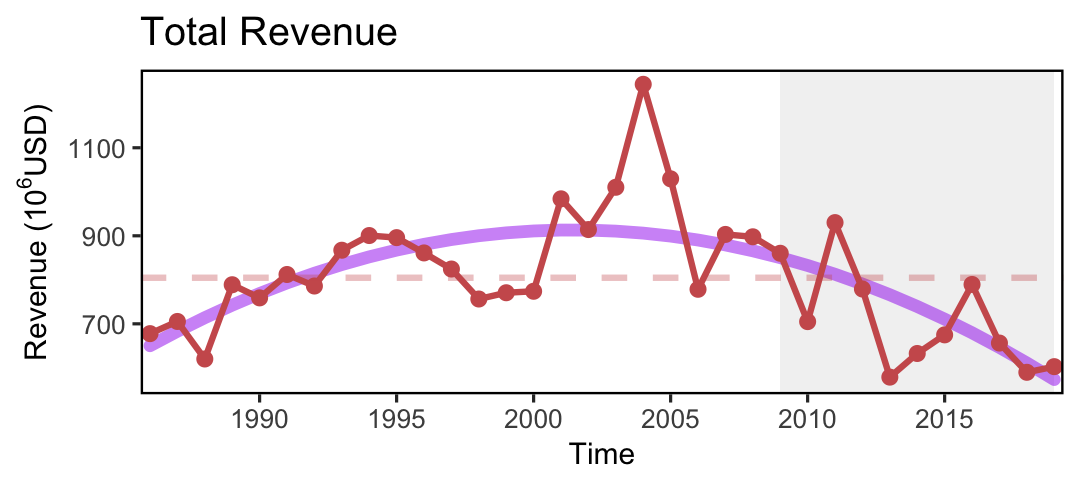
Total revenue for the region (black) and revenue from MAFMC managed species (red).
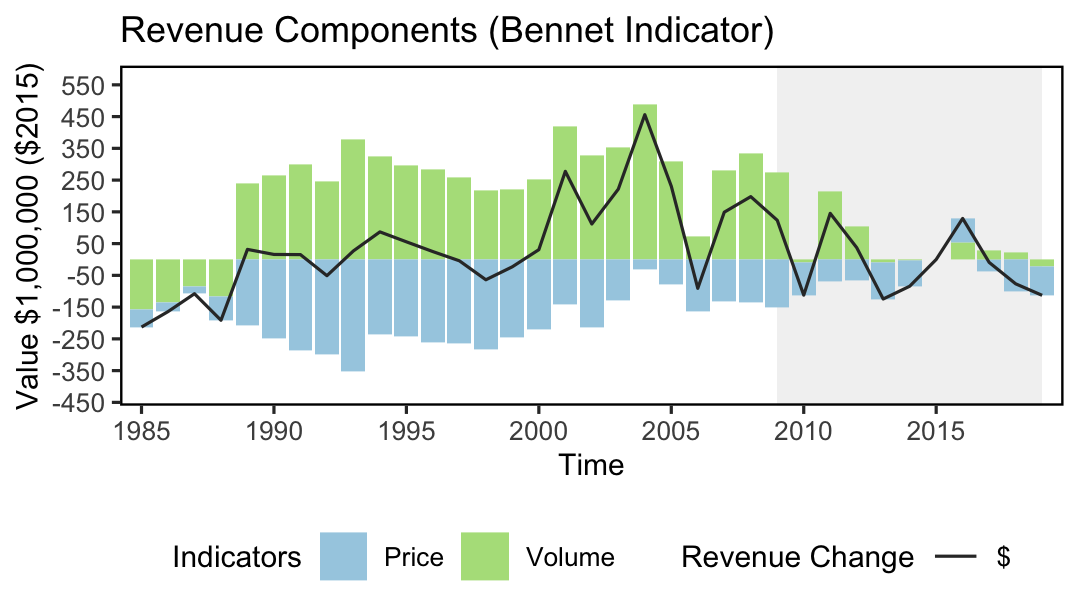
Revenue change from the 2015 base year in 2015 dollars (black), Price (PI), and Volume Indicators (VI) for commercial landings in the Mid-Atlantic.
Methods: Synthesis analysis refinements for SSC and Council decisions? Example
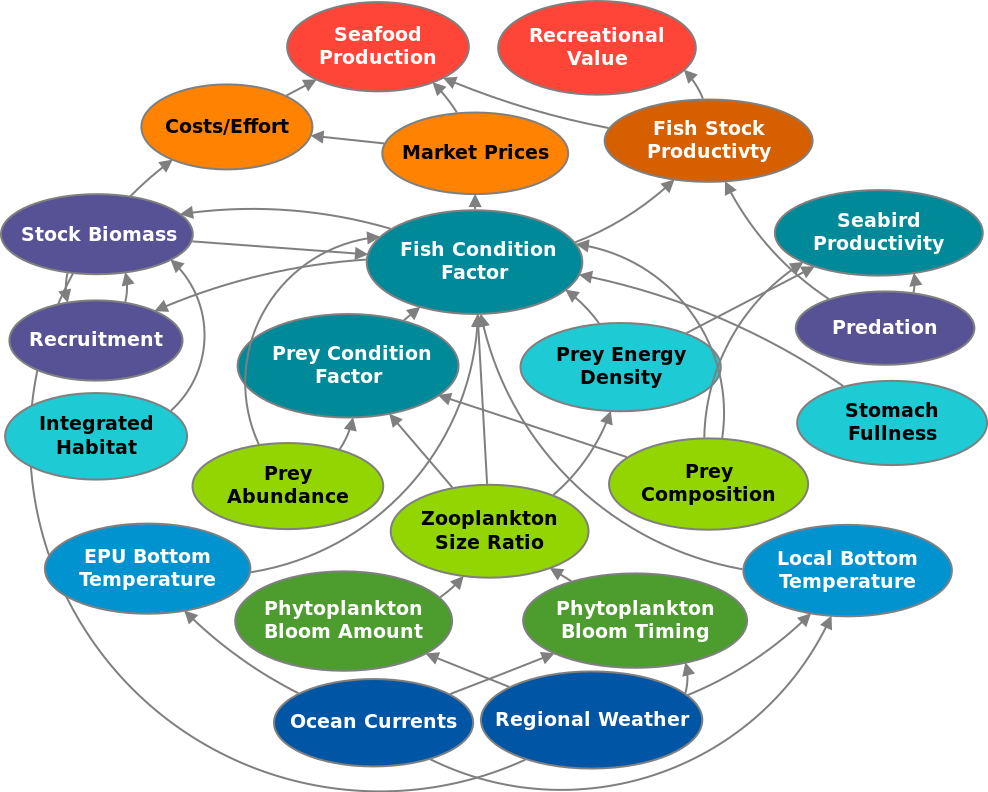
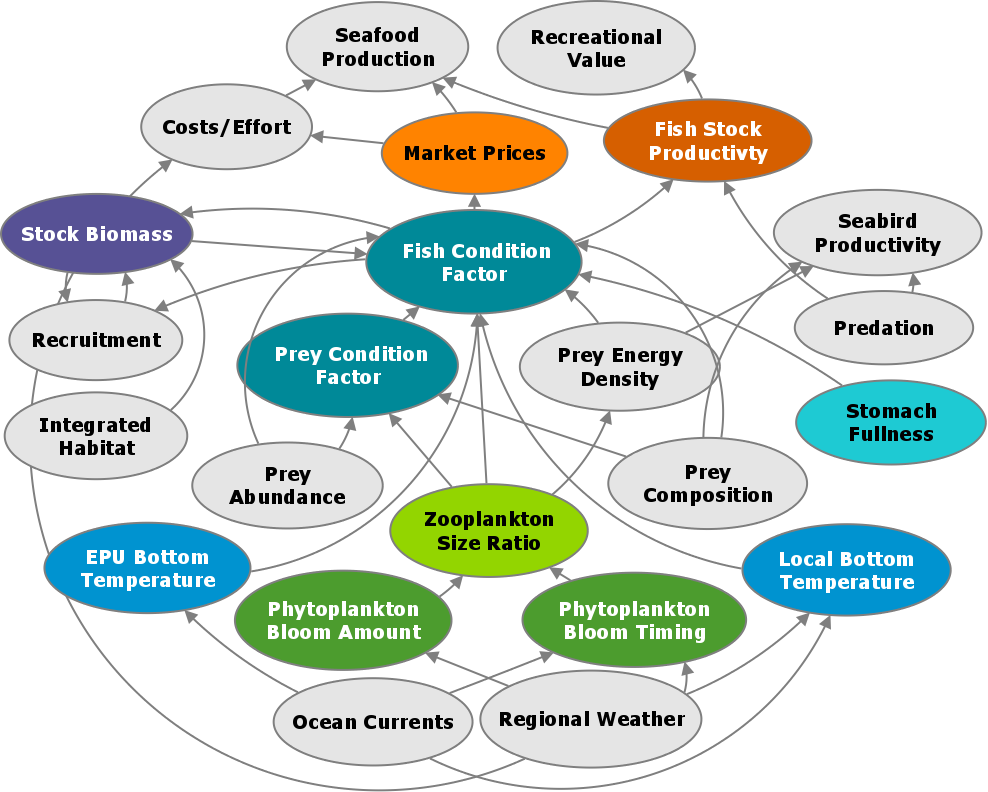
Conceptual model links indicators in the report with management objectives.
A subset of objectives are currently under investigation using GAMs and hedonic price functions. We plan to extend this work with structural equation modeling and or other methods in 2020.